The incoming EU Pay Transparency Directive requires member states to implement provisions into their national laws by June 7, 2026. UK companies without an operation in Europe may be insulated from any immediate impact, but recent reports suggest that the government are considering a package of measures aligned to those included in the EU, setting the course towards greater openness and accountability.
As a result, business leaders in the UK need to get their houses in order when it comes to employee data, job levelling, pay structures, equality monitoring and gender pay analysis. Only by doing this can they future proof themselves for change down the line and remain competitive in a global talent marketplace.
Key impacts of the EU Pay Transparency Directive
For businesses and employees, the headlines are as follows:
- Recruitment - Employers to provide information on each role’s pay level or range and can no longer ask for an applicant’s pay history.
- Employee rights to data - Employees will be able to request information on average pay levels or ranges, broken down by gender for comparable work. Employers will need to make this information accessible and easy to understand, alongside the criteria used to determine pay, pay levels and pay progression.
- Regular assessment – a new onus on employers to assess pay structures and policies for gender bias, and any discrepancies or inequalities to be identified and corrected.
- Gender Pay Gap reporting – Every three years, employers with 100-249 workers will need to publicise information on their gender pay gap. Annually for employers with 250+ workers. * Numbers could vary by country depending on local legislation.
- Remedying gaps - Where a gender pay gap of 5% or more is unjustifiable on objective gender-neutral factors, employers will need to assess and address.
So, which areas do business leaders need to be looking at carefully, and where does HR need to be investing time and resource?
-
Awareness: Facing up to a new dawn
As of 2025, pay gap reporting requirements are in place across 43 countries and 48 jurisdictions. In the US 14 states, or over 26% of the workforce, are covered by Pay Transparency laws that include the disclosure of pay ranges or even total compensation in adverts, and the banning of salary history. In Europe, each country will implement the EU Directive according to their own culture and readiness, which will lead to inconsistency. For example, Sweden’s Discrimination Act already requires employers with just 10+ employees to document the process and outcomes of equal pay surveys and in France regulations start at 50+ employees, both more stringent than the EU directive of 100+ employees.
The younger generation of workers is also leading a shift in expectation when it comes to openness around sharing information and are also digitally savvy enough to glean salary data on Glassdoor, PayScale and Transparency Street, much of which is self-reported and lacking in the kind of context or detail that can really help.
As a result, Remco’s are starting to note the tangible returns in being proactive around engagement and trust to boost retention and even productivity. A recent Willis Towers Watson survey revealed a growing tendency for UK companies to ramp up communication on pay transparency: while only 16% of companies surveyed were disclosing individual pay ranges, 54% were planning to in the future, 52% were considering sharing a pay transparency commitment, and 60% were considering communicating pay rate information to external candidates as part of the recruitment process.
- Educate your Business Leaders and Managers
This is often overlooked but is critical. More than ever, HR needs to provide clarity around pay transparency legislation: what it means for companies wherever they are located globally.
HR can get ahead of the game here by flagging that Pay Transparency legislation and pressure will eventually come for companies with a UK-only presence. By explaining the benefits and challenges to senior leaders and the actions needed to be ready, HR can perform a crucial role in enabling cultural readiness around Pay Transparency.
Training for managers will help them explain to workers what transparency might be in the context of your organisation and help them answer any difficult questions arising from compliance with new legislation, for example around the sharing of salary information at the recruitment phase.
- Assess your Transparency Readiness
At Innecto, we’ve been helping organisations plot their way through this journey, mainly gauging their transparency-readiness using a framework of questions for business leaders, HR, managers and employee, for examples:
- What does transparency mean to us?
- How far do we want to go as a company towards Pay Transparency?
- How ready are we as a leadership group to deal with this?
- Are our pay structures and decision-making capabilities up to it?
- How soon, or quickly, do we want to go on this journey?
- Consider your barriers to Pay Transparency
Pay Transparency is not without its risks and resistance typically comes from two groups:
- Older workforce – who have developed careers and pay in a secretive environment
- Established leaders – whose gut instinct may be to avoid the perceived consequences of Pay Transparency (salary comparisons, staff attrition and losing a competitive edge).
In our experience, every organisation looking for support in this area has a different jump-off point, but broadly speaking companies fall into three camps:
Type A: Transitional support – organisations with all the frameworks in place for equitable policies and practices but need help moving towards complete pay transparency.
Type B: Structural support – organisations with rigorous job evaluation methods and pay benchmarking tools but without the firm pay structure or policy to make confident data-backed decisions.
Type C: Strategic overhaul – organisations currently operating with no job architecture or pay benchmarking in place, who have more work to do.
- Assess your current Data capture methods
Do all you can to understand what data you have on your workers, including around pay, gender, ethnicity, age, disability, length of service and any other relevant metrics.
Identify any additional data needed for Pay Gap calculation and reporting purposes, and determine how it will be collated. Consider carefully any gaps in data, for example around the ethnicity and disability reporting being put forward by the UK government.
Figure out the best way to acquire this from employees and crucially consider the kind of communications you might need to broach the subject and encourage additional disclosure.
- Scrutinise Job Evaluation methods
As HR professionals and business leaders we need to be confident that roles are being assessed fairly and consistently, and career progression is mapped out in a way that workers understand. The term comparable work is key in the requirements of the EU Directive and will place scrutiny on how roles are assessed and classed as comparable.
We walk clients through a framework of questions, using our bespoke job levelling tool Evaluate:
- Are we confident that our roles are clear and well defined?
- Do our employees understand their options for progression within the company?
- Do we rely heavily on job titles?
- Do we have robust job evaluation methodology for assessing roles doing the same, similar work or work of equal value?
- Could we benefit from professional advice, or from looking at Evaluate?
- Question how you’re making Pay Decisions
HR should lead the way in scrutinising how pay decisions are currently made. Questions might include:
- Could we stand behind our pay policy and approach if challenged?
- Do our employees understand how their pay is determined, and decisions are made?
- How confident are we in how we assess performance?
- Do we carry out equal pay audits?
- If challenged to, could we articulate and share information about our pay practices?
- Could we benefit from professional advice, or from a product like PayLab?
In summary, even while we are not required to comply with legislation here in the UK, there is much we as HR professionals can do, to tee our organisations up for the future and be ahead of the game.
If you could benefit from a Pay Transparency Assessment or would like a demo of any of our HR Tech tools, please contact Justine.Woolf@innecto.com.












